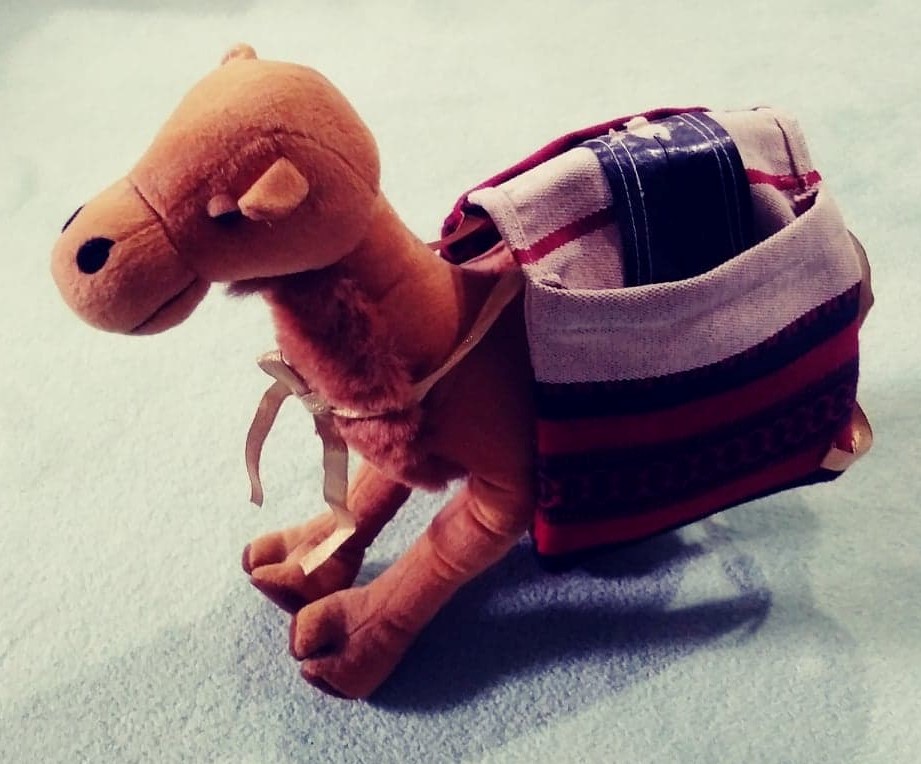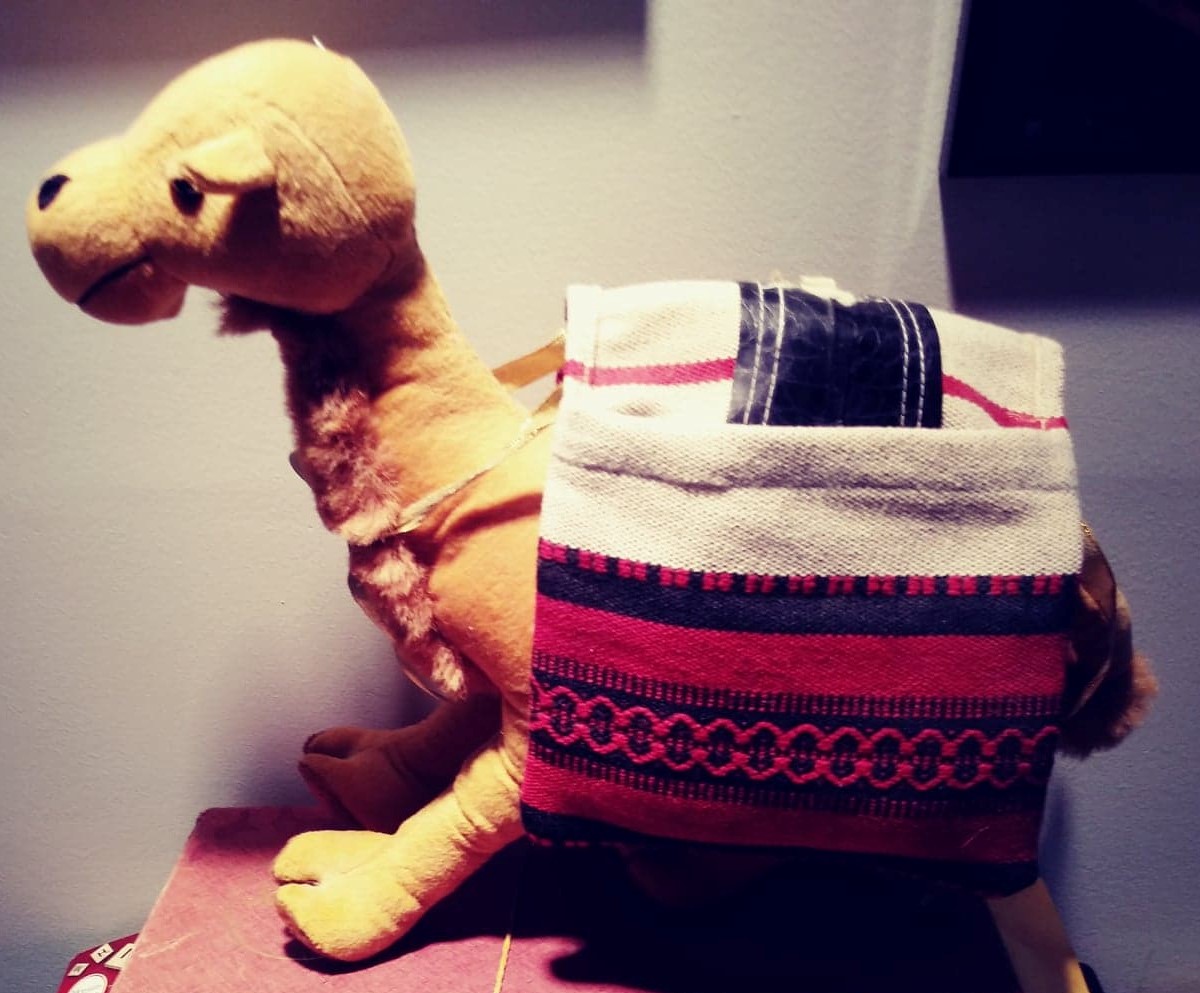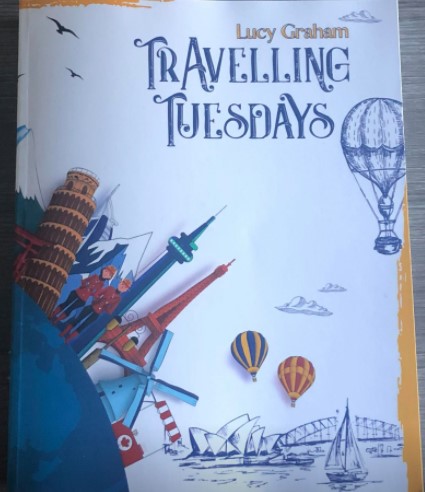This camel is carrying a saddle bag. I had this little fellow in my apartment in Kuwait and kept some letters and small notes in the pockets of the saddle bag.
The pattern on the bag is a traditional woven geometric design. Historically, Bedouin weaving has been a woman’s traditional task. Today Bedouin women continue the traditional arts and crafts of spinning, dyeing and weaving beautiful practical products from sheep, goat and camel wool. This craft is central to Bedouin heritage.
Some of the products made served a distinct purpose in the traditional nomadic life. They made saddle-bags for use with camels and donkeys. Rugs were used to warm seats on the ground and also as dividers to decorate the walls of the tents in the desert. Today rugs continue to be used as decorations in the living rooms of stone houses and as tent dividers. The reason for this is tradition. The presence of these artifacts emphasizes warm hospitality which is the unwritten law of Bedouins.
To make a rug or saddle-bag the work begins with spinning the wool onto a wooden spindle. Next would come boiling, dyeing and drying the yarn before being wrapped into balls of yarn. Today’s dyes can be bought at a local souq but formerly the leaves, roots, stalks and petals of indigenous plants were used in Arabia to make dyes. A parasitic scale insect called kermes has been used since ancient times to create a deep red dye. The red dye was derived from the dried bodies of the females of this insect. Kermes dye had good colour fastness in wool as well as silk.
The next step is the process after dyeing and preparing the yarn is weaving. The weaving is usually done by women on a ground loom. The ground looms were made of two sturdy lengths of wood staked into the ground. The long warp threads are stretched back and forth between the two pieces of wood. The weaver sits at one end and inserts the wefts which are the horizontal threads that are interlaced through the warp in a woven fabric.
These ground looms could easily be assembled for use, and then rolled up for storage and transportation. Large ground looms called natu or matrah are still the standard tool used to make larger heavier materials, such as tent walls.
Women made almost all the woven items for the nomadic lifestyle. They would make rugs, cushion covers, saddlebags and even the dividing curtain between the men’s and women’s sections of the Bedouin tent. A curtain could be up to thirty feet long and six feet high. Traditional style patterns are based on stripes or geometric designs within a limited colour palette. The Bedouin women say that each tribe has its own traditional weaving and style characteristics. I like the pattern woven into the saddle bag of my camel.
# living life abundantly # published author




